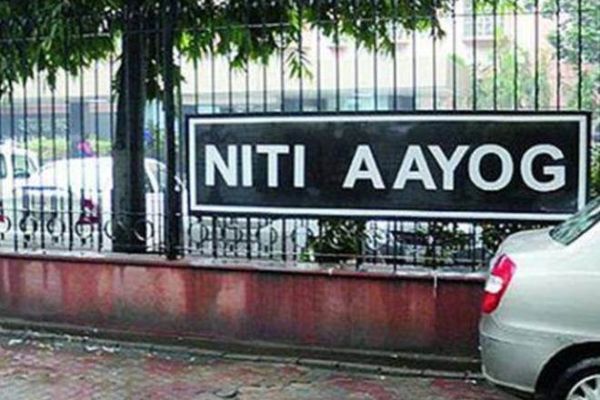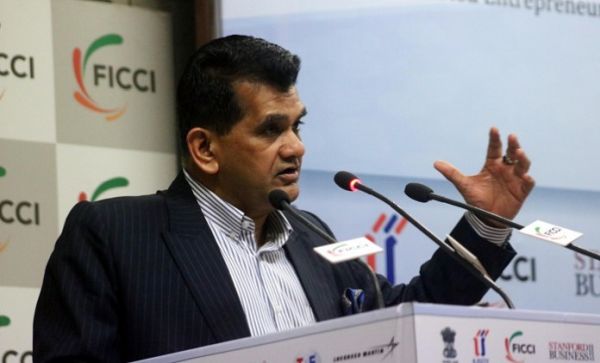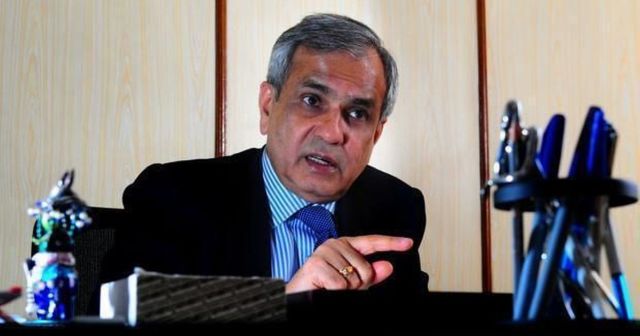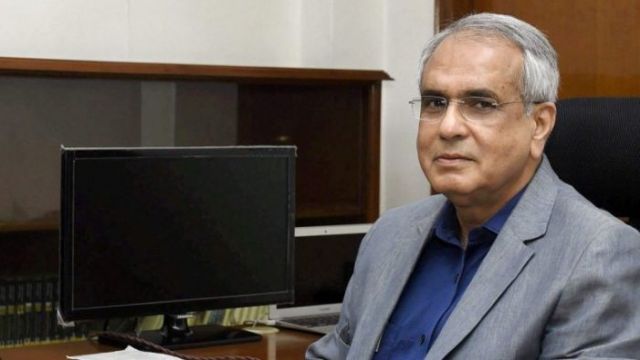
by Editor | May 25, 2021 | Corporate, Corporate finance, Corporate Governance, Economy, Finance, Markets, News, Technology
 New Delhi : The digital payments market in India is set to become a trillion-dollar industry in the next five years, led by growth in mobile payments which are slated to rise to $190 billion by 2023 from $10 billion in 2017-18, the NITI Aayog said on Tuesday.
New Delhi : The digital payments market in India is set to become a trillion-dollar industry in the next five years, led by growth in mobile payments which are slated to rise to $190 billion by 2023 from $10 billion in 2017-18, the NITI Aayog said on Tuesday.
This would present huge business opportunities for players in the digital space, according to the NITI Aayog’s “Digital Payment: Trends, Issues and Opportunities” report released on Tuesday.
According to the study, growth momentum of digital payments in volume and value sustained post demonetization with “spectacular growth” in new products like Unified Payments Interface (UPI).
Launching the report, NITI Aayog’s Principal Advisor Ratan Watal said the proposed changes in the regulatory framework, entry of global giants and the advancement of technology will drive the future growth of digital payments in the country.
—IANS

by Editor | May 25, 2021 | Opinions
 By Taponeel Mukherjee,
By Taponeel Mukherjee,
The “Composite Water Management Index” report released by the NITI Aayog recently highlights the issues confronting water management in India. A multi-pronged approach to tackle these problems is warranted. In a world where technology and infrastructure create synergies, smart water meters are one component of the strategy that can help us mitigate the water crisis.
Smart water meters have the potential to assist in efficient water usage because they primarily help utilities to bill their customers the correct amount, identify and resolve system issues that lead to water wastage and assist in creating a water ecosystem that is conducive for efficient usage.
To understand this better, one needs to look at the two components of water produced by utilities: (i) the part that generates revenue and (ii) the “non-revenue” part, or water generated by utilities that is not revenue earning. The criticality of reducing the element of non-revenue water in achieving a more sustainable water management system in India cannot be overemphasised.
To better appreciate the way smart meters assist in creating a more robust water management system, one needs to understand both “apparent” and “real” losses that lead to non-revenue water.
As defined by the American Water Works Association, “Apparent losses are the non-physical losses that occur in utility operations due to customer meter inaccuracies, systematic data handling errors and unauthorised consumption (and…) real losses are the physical loss of water from the distribution system, including leakage and storage overflows.”
In common parlance, “apparent losses” lead to utilities suffering revenue loss because of information asymmetry whereas “real loss” is wastage of water for which the production cost is incurred but it fails to reach the end-user. Smart meters, if implemented well, have the potential to resolve a large part of these two issues.
Beyond smart meter rollouts, water utilities in India will also have to start focussing on water “asset management” in a holistic manner. Better data, data analysis and capacity-building will be required to train and equip utility staff to use the surfeit of data that will gradually be available to make more informed decisions. Capacity-building amongst utility workers will be a critical component of delivering results through smart water meter infrastructure.
Apart from the operational aspects, the financing mechanism employed to deploy the high upfront cost smart water meters will be crucial. At its very core, water infrastructure assets have three sources of financing available in taxes, water tariffs and subsidies.
Given the contribution of water towards society and the increased urbanisation in India (according to the UN 2018 Revision of World Urbanisation Prospects, 34 per cent of India’s population lives in urban areas, a number expected to be well above 50 per cent by 2050), government expenditure will the critical component to finance smart meter infrastructure.
In this regard, one will have to price in the improvement in profit margins for water utility businesses from the new infrastructure, margins that can hopefully be utilised to create more infrastructure.
Smart meter infrastructure also provides an opportunity to multilateral banks and development agencies to assist in creating and expediting much-needed water infrastructure through grants and low-cost loans. The decision by the European Investment Bank (EIB) last year to fund the E-Distribuzione’s electric smart meter rollout in Italy through a Euro 1 billion loan is an example of the long-term lending support required.
While granular operational expertise at the ground level will be required to execute the project successfully, it will be equally crucial that smart meters at an aggregate level are viewed as an infrastructure asset to create financing mechanisms best suited to reduce barriers to usage.
As the smart meter roll-out gathers steam, it must be underscored that the implementation will be a long-term project. It will be necessary that learnings along the way are used to improve impact. It will be vital that the “input, process, output, outcome and impact” model is fully utilised. A robust policy framework that looks to improve on both the operational and financial aspects of the business will contribute very significantly towards India using its water resources prudently.
As city-wide roll-outs of smart water meters gather momentum, it will be mission critical that learnings are utilised to improve the future deployments. Besides, the ability of policymakers to create an environment where the public understands better the usage and benefits of smart water meter infrastructure will go a long way in creating a mechanism to manage water better.
However, managing non-revenue water better through smart meters is one part of a multi-pronged approach required to deal with the impending water crisis. Better policies for both groundwater and surface water management are necessary conditions for smart water meters to deliver their full potential.
(Taponeel Mukherjee heads Development Tracks, an infrastructure advisory firm. Views expressed are personal. He can be contacted at taponeel.mukherjee@development-tracks.com or @Taponeel on Twitter)
—IANS

by Editor | May 25, 2021 | Corporate, Corporate Governance, News, Politics
 New Delhi : NITI Aayog Vice Chairman Rajiv Kumar on Tuesday said people have paid a “very high cost” for democracy in the last 70 years and it is now time to reap the dividends. He insisted that NITI Aayog, as a “principal change agent”, can help garner those dues.
New Delhi : NITI Aayog Vice Chairman Rajiv Kumar on Tuesday said people have paid a “very high cost” for democracy in the last 70 years and it is now time to reap the dividends. He insisted that NITI Aayog, as a “principal change agent”, can help garner those dues.
“We have paid a very high cost for our democracy in the past 70 years. It’s very clear. Otherwise we could have…anyway. But now is the time when NITI Aayog will help us in earning the democratic dividend,” Kumar said in response to a query by IANS on how NITI’s role was different from the erstwhile Planning Commission.
“It is time to get the democratic dividend which would come from states competing for good governance and good delivery of public services and not by having competitive populism,” he said.
Kumar said that the Aayog is a “complete new entity” as compared to the Planning Commission because it works as “partners to the states” and not as “people who hand out doles to the states”.
“We, therefore, don’t hold durbars in the NITI Bhavan. I have actually taken the trouble and met Chief Ministers of 21 states in their state capitals. I visit them. Completely the reverse of what Planning Commission used to be,” he said.
Speaking about NITI Aayog not having any financial powers, he said it had the “power of ideas and the power to implement them”.
“By the way, some of my friends tell me that I have come at a wrong time when the NITI Aayog has lost all powers to disburse money. But we have got the power of ideas and the power of implementing those ideas, both at the central level and much more at the state level, trying to get them (states) replicate the best practices,” Kumar said.
“And here let me say — and this is my wish and hope — that if we go along the way we are going, on which the Prime Minister has been sort of directing us all the time to go, we will become one of the principal change agents in this economy,” he added.
He said that the NITI Aayog has the potential and the ambition to do it.
“We can bring the states on the same page, we can make them compete with each other,” Kumar said.
On the question of economy not creating enough jobs, Kumar said the allegation of “jobless growth” is “mithya” (falsehood) and has no substance.
He, in line with what the Prime Minister said recently, insisted that not enough data is available on the jobs.
Asked if the government is shifting the goalposts after four years by hiding behind the pretext of not having sufficient data on growth, Kumar said: “Not at all. We are not shifting the goalpost. My predecessor (Arvind Panagariya) had taken this up in a major way in the second year itself. It takes time to tackle such an important question.”
“The decisions have been taken, the financial resources have all been allocated. The Ministry of Statistics and Programme Implementation has already had a household survey in the field.
“The change in employment can only come when the first quarter is repeated in the 5th quarter. Then only you know the change Quarter-to-Quarter. Therefore it is taking time. But we will get the best data every year, not just once in five years,” he said.
—IANS

by Editor | May 25, 2021 | Interviews

Vice Chairman of Niti Aayog, Rajiv Kumar
By Vishav,
New Delhi : Petroleum is the taxation milch cow for the central and the state governments and it is unlikely to be brought under the Goods and Services Tax (GST) any time soon.
That’s also the view of the Vice Chairman of Niti Aayog, Rajiv Kumar. Several senior ministers have demanded that petroleum products — basically petrol and diesel — be brought under the the new taxation regime.
But says Kumar: “It (oil) can’t be brought under GST. That’s because the total state and central taxes on petrol put together are around 90 per cent right now.”
He told IANS in an interview here: “I can’t see how any state will take a cut so huge as the highest rate under the GST is 28 per cent. A new GST band will have to be opened up — and that will be an enormous exercise.”
While supporting “in principle” the idea of bringing all items under the new indirect tax system, he said those talking about doing it now have not thought this through.
“The better way to do this is to first start reducing taxes (on petroleum products) as I have said many times in public. States impose ad-valorem tax on oil and so they all had a windfall gain (when prices rose). There is a need to rationalise it,” he said, adding “states should especially cut taxes.”
Kumar said that both the central and the state governments should start the process of weaning themselves away from their dependence on oil taxation.
According to him, the Central government collects Rs 2.5 lakh crore as tax on oil while almost Rs 2 lakh crore is collected by the states. “From where will they compensate it?” he asks adding that if the taxes are reduced gradually, the burden on the economy will get reduced.
“Higher oil prices are like a tax on the economy. If oil prices are brought down, economic activity will also improve,” Kumar said.
“Once that is achieved, once the revenues have gone up from other sources and the economy has picked up, then you can think of bringing oil under GST. It’s not that easy,” he added.
Ever since the new tax legislation was rolled out on July 1 last year, there had been talk of bringing it under the GST with top government officials and ministers supporting the need for such a move. The Opposition parties, of course, have been clamouring for it.
In December last year, Finance Minister Arun Jaitley had told the Rajya Sabha that the Central government was in favour of bringing petroleum products under the ambit of GST after building a consensus with states.
More recently, in April, when the international crude oil prices were going up sharply, pushing the domestic petrol prices to record levels, BJP President Amit Shah told a rally in Mumbai that efforts were on to bring petrol and diesel under the GST.
From Road Transport and Highways Minister Nitin Gadkari to Petroleum and Naural Gas Minister Dharmendra Pradhan, almost every senior BJP minister has favoured bringing petroleum products under the GST.
Among states, Maharashtra Chief Minister Devendra Fadnavis has also expressed willingness to bring petrol and diesel under GST in his state if a consensus was brought about on it.
Kumar says he was in favour of such a change, but it has to be thought through in practical terms.
“I am just simply saying that let’s not try to hurry it because you would only run into problems as there is a huge dependence on oil,” he said.
“Even electricity should be brought under GST. Everything should be under GST. But I am not sure whether it is worked out yet. Let’s agree to bring it under GST but over a period of time as is practical,” he said.
(Vishav can be contacted at vishav@ians.in)
—IANS

by Editor | May 25, 2021 | Interviews

NITI Aayog Vice Chairman Rajiv Kumar
By Vishav,
New Delhi : Even as the ruling BJP and its senior leaders have repeatedly attacked the Congress for leaving behind a legacy of “governance failure”, “policy paralysis” and “economy in shambles”, the Central government can no more use this as an excuse and will have to take ownership of not only its accomplishments but also its failures from now on, NITI Aayog Vice Chairman Rajiv Kumar said.
He said while it was necessary to look at the last four years of the Narendra Modi government in the context of the legacy it inherited from the UPA regime in 2014, the economy has now overcome those issues and henceforth, the government should be judged on its own merit.
“Now the economy has come out of those inheritance issues. No more should they be used as an excuse for anything. Whatever happens now is the government’s own (doing) completely,” Kumar told IANS in an interview.
“After all the government has done so much despite all of it (legacy issues). It took huge structural reforms like demonetisation, GST, Insolvency and Bankruptcy Code, Benami Act, RERA and recapitalisation of banks to overcome those legacy issues. I think we have finally overcome those and henceforth, the government should be judged on its own merit,” he added.
Kumar’s remarks hold significance since the Bharatiya Janata Party (BJP) and its senior leaders, including Prime Minister Narendra Modi and Union Minister Arun Jaitley have repeatedly ripped into the Congress for leaving behind an “economy in a shambles” which the government was still bringing on track.
Be it the crisis relating to non-performing assets, the Nirav Modi-linked PNB scam, the sorry state of the banking sector, the slow GDP growth rate, the fiscal deficit situation and even the rising oil prices, the BJP leaders have used every opportunity to blame it all on the legacy it inherited from the erstwhile UPA government.
Even the NITI Aayog Vice Chairman has often talked about the legacy inherited by the current government and how it has affected its performance.
“For a government which had inherited the most terrible economic situation and inherited a situation where there was a complete paralysis in governance and decision making, and also a situation where world economy was also not very good… given the legacy, given the world economy and given the breakdown of governance, I think this government has done very well,” Kumar said.
He added that when the BJP took over in 2014, the inflation had crossed the 9 per cent mark and growth rate had slumped to below six per cent.
“What (then Finance Miniser P.) Chidambaram had done was to allow the fiscal deficit to run from 2.8 at one time to as far as 6.4 per cent. From there to come to a situation where we have now achieved a growth rate of 6.7 per cent last year and 7.7 percent in the last quarter with inflation at 3.8 per cent, I think that’s just remarkable,” he said.
The fiscal deficit for 2017-18 was 3.5 per cent and the government has set the target of bringing it down to 3.3 per cent in the current fiscal.
The noted economist added the economy was much more balanced than it was before and had been pulled out of a crisis — a “crisis of complete private sector investment having been stopped because of the NPAs and the twin-balance sheet” problem.
“Not only has this government maintained the macro-economic balance and brought back growth on its track but along with it, it has made the economy far more cleaner and much more formalised, while also doing a lot to improve inclusion,” he said.
Asked if there are any areas where the government could have performed better, Kumar responded: “One clear role which the government has recognised is farmer’s income. I think this focus has now been brought into the budget. The agriculture sector remains a backward sector and it requires a lot of reforms.”
He added that performance in export sector was a cause of concern while the water sector, which was turning into a crisis situation, was another area which needed attention along with the quality of education.
“These are chronic issues. They take time to be figured out. But the credit should be given to the government that they have recognised these problems and is not trying to hide them or brush them under the carpet. Also they are trying new approaches to improve the performance like ranking states on education quality, water conservation, health,” Kumar said.
(Vishav can be reached at vishav@ians.in)
—IANS

 New Delhi : The digital payments market in India is set to become a trillion-dollar industry in the next five years, led by growth in mobile payments which are slated to rise to $190 billion by 2023 from $10 billion in 2017-18, the NITI Aayog said on Tuesday.
New Delhi : The digital payments market in India is set to become a trillion-dollar industry in the next five years, led by growth in mobile payments which are slated to rise to $190 billion by 2023 from $10 billion in 2017-18, the NITI Aayog said on Tuesday.


